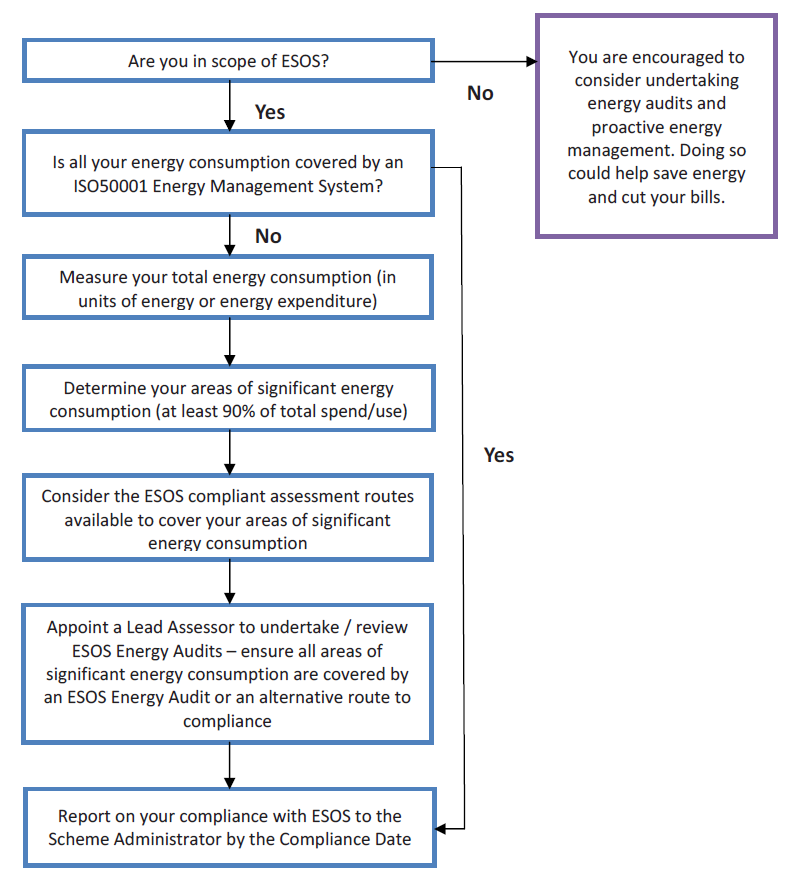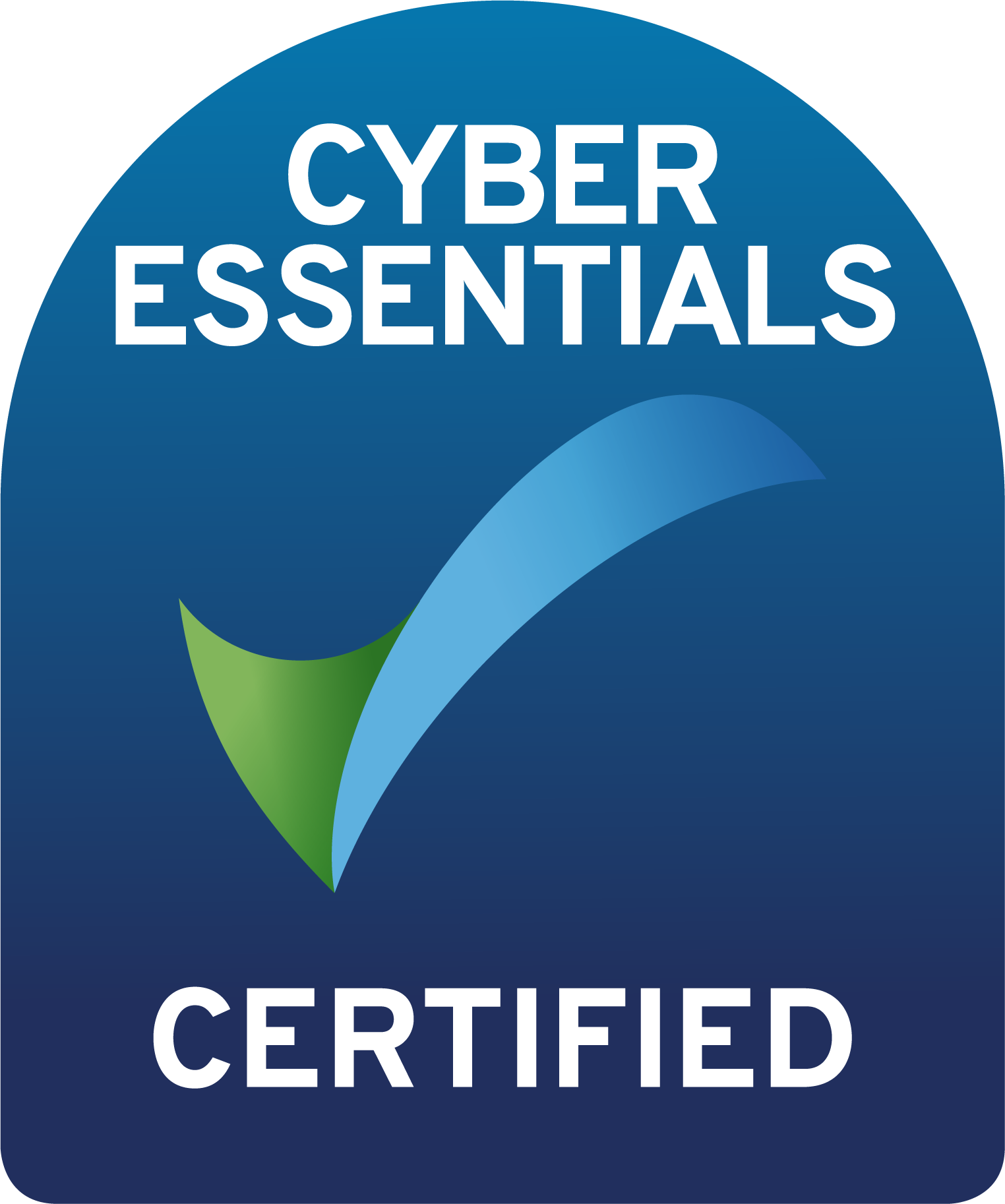Energy Saving Opportunity Scheme – What You Need to Know | 2EA

ESOS DEADLINE EXTENDED UNTIL THE 15TH APRIL 2016
The EU Energy Efficiency Directive entered into force in November 2012. The Directive aims to drive improvements in energy efficiency across the EU. Article 8(4) includes a requirement that all large (non-SME) enterprises undertake energy audits by 5 December 2015 and every 4 years thereafter.
The Government has developed the Energy Saving Opportunity Scheme (ESOS) in order to comply with the Article 8(4) requirement. The scheme seeks to minimise the administrative burden on business, including by realising synergies with existing policies and requirements, such as the CRC Energy Efficiency Scheme. At the same time, the Government also aims to maximise the energy efficiency and economic gains from the scheme.
- ESOS Timetable
- Who Must Comply with ESOS?
- ESOS Assessments
- Measurement of Total Energy Use/Spend
- Energy Audits
- Alternative Routes to Compliance
- Reporting Requirements
- Penalties
- Key steps to complying with ESOS
- ESOS Management Packages

ESOS Timetable
ESOS will run in four year phases. For each phase, there will be a qualification date, when participants should determine if they are in scope of the scheme, and a compliance date, by which participants must have completed their ESOS Assessment. For the purposes of determining whether they are in scope of ESOS, participants need to consider their size (and group structure) at the qualification date.
The first qualification date will be 31 December 2014. Undertakings that qualify for ESOS on this date will need to participate in ESOS.
The first compliance date will be 5 December 2015; all participants must have completed the required energy audits and notified the Environment Agency, as scheme administrator, that they have done so by this date.
ESOS will continue in four year phases, with subsequent qualification dates and compliance dates on each four-year anniversary of these initial dates.

Who Must Comply with ESOS?
Participation in ESOS will be mandatory for any undertaking which carries out business activity within the UK and which meets any one of the following criteria:
- It has 250 or more staff.
- It has < 250 staff but has an annual turnover exceeding €50m and a balance sheet exceeding €43m.
- It is part of a corporate group which includes a large undertaking (as defined by (1) or (2), above)
In determining whether they meet the financial thresholds above, undertakings should use their most recent annual financial statements ending on or before the qualification date. Sterling figures should be converted into Euros using the Bank of England Pounds Sterling – Euros spot rate prevailing on the qualification date.
Throughout this document, undertakings which meet one or more of the qualification criteria are referred to as ‘participants’. Participants may work in any industry including, for example, joint ventures, partnerships and charitable organisations (providing they are an undertaking). The scheme will not apply to public bodies. For the purposes of ESOS, public bodies are defined as organisations which must comply with public contracting regulations.
In the case of corporate groups, there will be flexibility to allow group members to participate together or as separate participants. In the case of a corporate group wholly confined to the UK, the default position will be that all the members of a corporate group participate as a single participant.
In such a case, by default, the highest parent operating in the UK will be responsible for ensuring an ESOS Assessment includes their own energy use and that of any subsidiaries for which they are responsible. In the case of a corporate group comprising an overseas parent with several UK subsidiaries, the default position will be that there will be a separate ESOS participant for each highest UK parent (participating in respect of itself and its subsidiaries).
Joint Ventures
Joint ventures, where they pass the qualification thresholds, will also be required to participate in ESOS.
Joint ventures will participate separately from the venture partners, reflecting the fact that no individual venture partner has control of the joint venture, and so it is not part of any one of their corporate groups
Trusts
Assets held in trust will be included in ESOS if they qualify. This will depend on whether the organisation that is party to the agreement for the supply of energy to the assets qualifies for ESOS or not. In most cases, where the organisation that is party to the energy supply agreement qualifies, they will be responsible for ensuring the compliance of the trust assets with ESOS – as a separate ESOS participant for each trust.
However, where this organisation is a trustee, the responsibility will fall first to any alternative investment fund manager (AIFM) or operator. There will also be some flexibility for organisations to allocate responsibility to other parties, by mutual consent.
Voluntary Use of ESOS by Others
Organisations which are not required to participate in ESOS by virtue of the qualification criteria outlined above may still benefit from voluntarily measuring energy consumption and undertaking energy audits carried out or overseen by a qualified auditor.

ESOS Assessments
ESOS participants must complete an ESOS Assessment in each compliance phase, by the compliance date.
ESOS will run in four year phases. The first compliance date will be 5 December 2015; the second will be 5 December 2019; and every four years thereafter. An ESOS Assessment includes three main requirements:
- Participants must measure all their energy use for a continuous twelve month period.
- Participants must undertake audits covering all their main areas of energy consumption.
- Participants must report their compliance to the Environment Agency by the compliance date.
Participants must also maintain an ESOS Evidence Pack providing a full record of ESOS compliance.

Measurement of Total Energy Use/Spend

To begin their ESOS Assessment, participants must calculate all their energy use for a continuous twelve month period. The requirement for 12 months’ data is to ensure seasonal variations are taken into account.
Under a ‘comply or explain’ approach, participants may use less than 12 months’ worth of data if they have a reasonable justification for doing so – e.g. records are unavailable or it would be disproportionate to gather them. In such cases, participants must record their reasons for not doing so in their ESOS Evidence Pack.
All the energy supplied to a participant for consumption in the UK will be within scope of ESOS. This includes all energy consumed by assets held or activities carried out by the participant.
Where a participant is supplied with energy but transfers it on, and where the amount of energy transferred on is known, the participant can deduct this from its total energy use. For example, where a landlord transfers electrical supply on to its tenants and meters this supply it may deduct this from its overall energy use. Participants may calculate their total energy use either in energy units, such as kWh, or in expenditure terms. This total should include energy used in buildings, industrial processes and transportation.
Energy use that takes place outside the UK will not be within scope of the scheme (with the exception of energy used in international transport, where specific rules apply – see below).
Participants will have some flexibility in determining the period over which they measure their energy use. This allows participants to determine when measurement is most efficient, perhaps aligning with the measurement or reporting time periods for other schemes, such as the CRC Energy Efficiency Scheme.
Energy used by a participant’s road fleet will be within scope of the scheme. This will include company owned vehicles, company cars and grey fleet (private vehicles of directors/employees used in the business of the participant).
International Transport Energy Use
For all transport energy use, it is the participant that is supplied with fuel and uses it in their business that must consider this energy use.
For aviation and shipping, participants will be required to measure at least all energy consumed in journeys that begin and/or end in the UK.
For international road and rail transport, participants will be required to measure at least all the energy consumed in the portion of journeys that takes place in the UK.
Where a participant chooses to measure additional transport movements beyond the required minimum (e.g. where an airline measures all its flights, for administrative ease) it must identify its areas of significant energy use based on all measured energy use.

Energy Audits
Participants must ensure that at least 90% of their total energy use is subject to ESOS Energy Audits or an alternative route to compliance. For the purposes of ESOS the areas of energy usage which cumulatively meet 90% of total energy consumption are referred to as ‘areas of significant energy use’. Other areas of energy consumption will not require an audit.
ESOS Energy Audits

ESOS Energy Audits must also be based on 12 months’ worth of data (unless a reasonable explanation can be given as to why this is not necessary or possible). Energy Audits should provide recommendations for any cost-effective energy efficiency measures that can be undertaken – with estimated costs and benefits quantified. These recommendations, and the energy audits themselves, should focus on those aspects of energy use that are within the participant’s control. For example, a landlord will not be required to assess the energy use of tenants occupying part of their office space.
ESOS will operate in four year compliance periods. Participants can count audits undertaken throughout the four year cycle towards their compliance with ESOS. For example, where a process is identified as a main energy using activity through the measurement process, any audit of this activity that has already taken place in the four-year phase can be counted towards overall compliance.
For the first phase of ESOS where the compliance period will be shorter than 4 years, running from June 2014 to 5 December 2015, auditing activity carried out since 6th December 2011 may be used to support compliance. ESOS Energy Audits must be undertaken, overseen or reviewed by a qualified ‘Lead Assessor’.

Alternative Routes to Compliance
Participants that have in place an energy management system (certified to ISO50001 standard) will be considered to have complied with the audit requirement for all areas of energy use which it covers.
Where participants have had energy audits through the Green Deal or to obtain Display Energy Certificates (DECs) where accompanied by a recommendation report, these audits will be recognised for the purposes of ESOS. Any building which has had such an audit within the ESOS cycle in question can be counted as having been audited for the purposes of ESOS in that cycle (with regard to the specific building for which the audit was undertaken).
Using Existing Energy Audits to Support Compliance
Lead Assessors may also consider work undertaken to obtain other audits and assessments, such as the Carbon Trust Standard, a Green Fleet Review, and work undertaken as part of an energy or environmental management system (for example, an ISO 140001 Environmental Management System) or as part of business as usual activity by a participant’s energy manager or sustainability team. Lead Assessors may take this work into account for ESOS compliance if it meets the minimum requirements of ESOS.
Participants will also be able to use data gathered under the CRC or other Government schemes to support their compliance with ESOS. Where, for instance, energy audits have been carried out to identify energy efficiency savings to meet Climate Change Agreement targets, these may also contribute to ESOS compliance provided that they meet the minimum requirements of ESOS.

Reporting Requirements
Participants will be required to notify the Environment Agency of their compliance at the end of each compliance period. The basic notification details will include confirmation of compliance; information on the participant, including the name of the director(s) or equivalent who signed off the report and information on the Lead Assessor, including name and approved qualification (or approved membership of a professional register).
For undertakings that are complying as a group, the participant will also need to provide information on the participant undertakings.
Participants will also have the opportunity to voluntarily disclose additional information about the results of their ESOS Assessment and energy audits, actions taken as a result, and their energy consumption and management in general.
The Environment Agency will publish a list of all participants which have notified that they have complied with ESOS, together with any voluntary information provided by participants.
Auditor Requirements
Each participant will need to appoint a Lead Assessor to lead the ESOS Assessment process, ensuring that work is undertaken by staff with appropriate knowledge and experience and that all areas of significant energy consumption are addressed. Lead Assessors can be internal staff or can be external professionals contracted by the participant. All Lead Assessors must belong to an ‘approved register’.
The Environment Agency, as the scheme administrator for ESOS, will maintain a list of ‘approved registers’, which it will make available on its website. DECC expects that the list of ‘approved registers’ will draw on a range of existing professional qualifications/memberships as well as providing the opportunity for professional bodies to introduce new registers.

Penalties
The scheme administrator and compliance bodies (regulators) shall have the power to impose penalties on participants that are found to be non-compliant.

What Happens Next?
Some key dates relating to the launch of ESOS and the first compliance period are provided below.
- June 2014 – The Government Guide to ESOS are published. ESOS scheme regulations come into force.
- July – December 2014 – Details of approved registers of lead ESOS assessors are published.
- Autumn 2014 – Scheme administrator publishes detailed compliance guidance.
- 31 December 2014 – The qualification date for the first ESOS compliance period.
- 5 December 2015 – The compliance date for the first ESOS compliance period.



